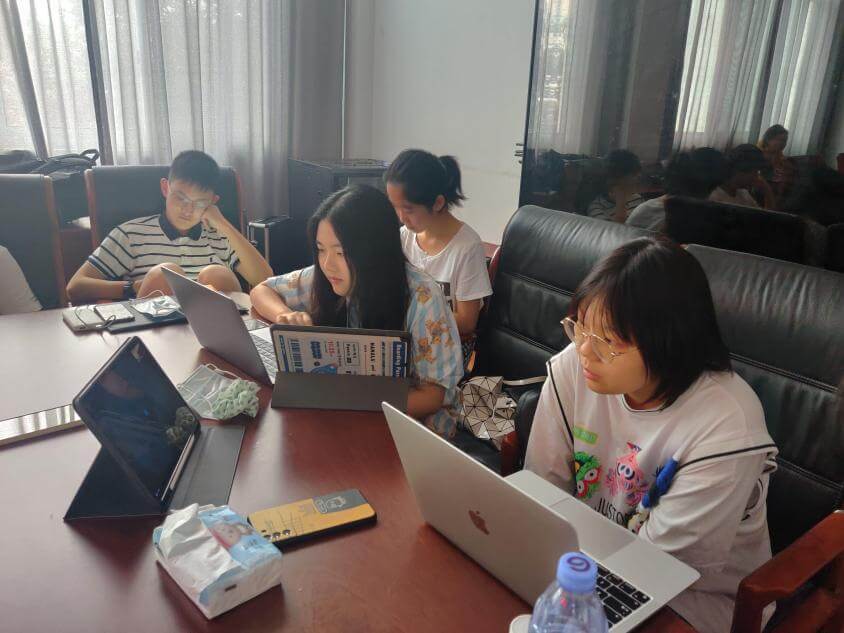Integrated Human Practices
The original intention of our drug design has always been to help people suffering
from neurodegenerative diseases in the world get rid of the pain. We hope that more people will understand
Alzheimer's disease because of us. More people will understand the power of microglia and that our drugs can
be successfully introduced to the market to help more people. We first conducted a questionnaire survey to
determine the public's understanding of microglia and inflammation to achieve our goal. Secondly, we consult
brain science experts and business experts to help us solve scientific problems and accelerate the
commercialization process. Once we had identified the challenges we faced, we decided to popularize official
accounts and posters and make changes in the design of experiments and products.
We learned about the public's understanding of inflammation and microglia from the
questionnaire survey, popularized inflammation and other related knowledge to the public, popularized
inflammation and other related knowledge to the public, promoted our team and research projects, and
collected real cases of related inflammatory diseases in social groups. we made 12 questions and made a
chart to indicate that most middle-aged people understand inflammation and basic knowledge more intuitively.
The 40-50 age range has the most significant number of respondents, accounting for 37.01%, 75.59% of people
have a particular understanding of inflammation. But in the professional field and the very important
microglia, people may not be familiar with them. Therefore, we decided to raise the public's understanding
of microglia and inflammation, especially the old. However, there are 34 respondents with no less than one
patient with chronic neurodegenerative disease. At the same time, through the survey data, as of 2019,
Alzheimer's patients accounted for a quarter of the world's total patients, and it is urgent to pay
attention to related diseases.

Based on the problems we gained from the questionnaire, we mainly focus on two
forms to educate people: our official WeChat account. We post serial articles on that account that tell us
what our groups are working on and some facts and additional information about PPM1A and the effect of using
inflammation to solve specific nerve diseases. As a result, people see those articles and subscribe to our
account to look for more information about the whole project that we have been doing.

In addition, we also design educational comics and roll-up banners. These create
more visual impact to see what we are and what we want to do for this project. Take our educational comic as
an example. People can see from the pictures what symptoms of very specific nerve disease, the Alzheimer's
disease will cause, and illustrate that by pictures and fewer words to demonstrate for our audience. We also
have a straightforward story that tells the people what is happening in the patient's brain to understand
how that disease occurs. In addition, we also provide some suggestions that people might need if they have a
similar situation or just for future prevention. So it did have a positive effect on educating people in
this way.

Interview with Expert
During the experiment, we found that some biological problems we encountered were
difficult to overcome. As a result, we decided to hold a meeting to ask Mr. Xu Zhixiang, a famous professor
at Fudan University. We first collected the individual and collective problems and held a meeting to discuss
which issues are challenging to overcome and very important. Then, through screening, we identified the
problems and started an online meeting with the professor. The professor's answer has greatly inspired us in
biology and the future development of drugs. In biology, the professor answered the professional questions
raised by the students, such as the impact of different activate states of microglia on drugs. In terms of
the future development of drugs, the professor pointed out some methods that could speed up the experiment
and commercialize medicines earlier. He also pointed out that the compounds we found are difficult to be
used as health products but can be used in medicines in the future, and he gave specific reasons, such as
the impact of some policies. Through interviewing professors, we gained a lot. We determined the direction
of drug production and mastered some methods to improve the experimental rate.

Through interviews with experts, we learned about price adjustment, the proportion
of tax in the total expenditure, the maximum loan amount that the bank can provide, and the negotiation with
the FOOD and Drug Administration, as well as the solution to the problem of how to obtain a large amount of
investment. Chief among them are measures to investigate patients' consumption levels and apply for patents
on drugs. And finding investors and negotiating with the FDA is significant. Finally, finding investors to
prove the use of the drug is also indispensable.

Our team constantly improves and breaks through itself in product design and
promotion. All we do is hope that more individuals will know about neurodegenerative diseases, and the world
will be less pain and forgotten, more healthy and beautiful.
